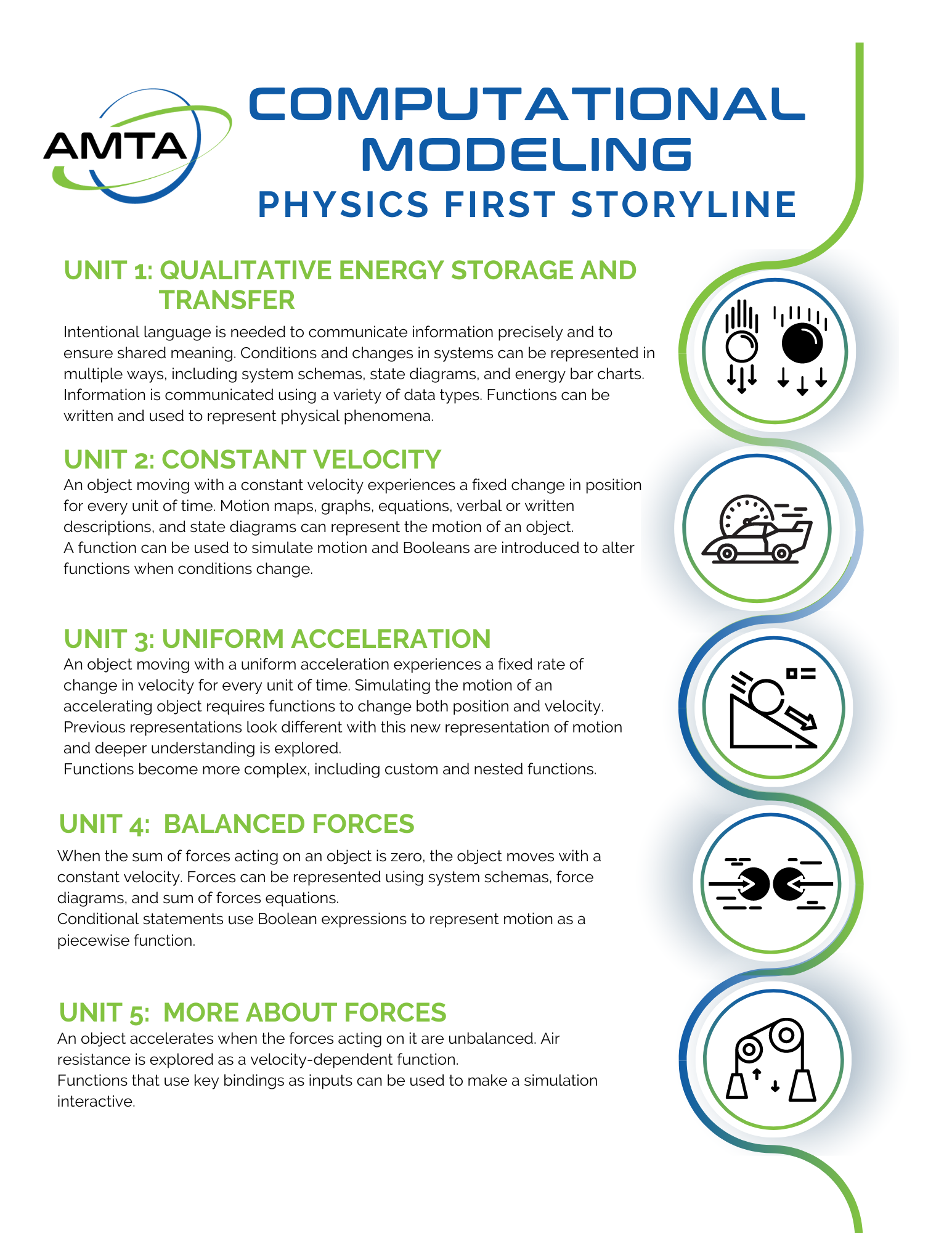BRIEF HISTORY
Computational Modeling Physics First with Bootstrap was developed collaboratively with the American Association of Physics Teachers, American Modeling Teachers Association, STEMTeachersNYC, and Bootstrap along with numerous secondary Physics teachers. Funded by the National Science Foundation from 2016 – 2022; CMPF-B is currently a Modeling Instruction workshop at various locations.
CMPF-B STORYLINE
Download a PDF File of CMPF-B Storyline

CMPF-B Vs. mechanics
These materials are intended for a 9th grade physics-first course. They address many of the concepts in a physics mechanics course with an opportunity for students to learn coding in Pyret. An essential literacy for all students combines four pillars: problem decomposition, pattern recognition, abstraction and algorithms. It involves expressing solutions as a series of steps to automate a process. Follow this link to view a video of a webinar in which a workshop leader explains the differences between CMPF-B and physics mechanics.
SAMPLE MATERIALS
Follow this link for CMPF-B Sample Materials – Unit 2 – Constant velocity. Note that this sample unit does NOT contain any quizzes or tests, and addresses the following objectives for students:
- Represent the motion of an object using a computational representation in which a differential is added for each interval of time.
- Design and Modify functions in Pyret to represent constant velocity motion and use them to make predictions.
- Differentiate between position, distance, and displacement.
- Find the velocity of an object using the slope of the position vs. time graph.
- Interpret the initial value of a position vs. time graph.
- Draw an average velocity line on the graph and calculate the average velocity.
- Create a mathematical representation ( function) relating position, average velocity and time. Use it to solve problems.
- Represent the motion of an object moving with a constant velocity using multiple representations (words, motion maps, position vs. time graphs, and velocity vs. time graphs, computational function etc.) and use them to solve problems.
- Relate displacement to the area between the horizontal axis and the line on a velocity vs. time graph.
INTERESTED IN A CMPF-B WORKSHOP?
First-time Modeling Workshop attendees qualify for a free one-year membership to AMTA. Members have access to ALL instructional resources, webinars, distance learning courses, and other membership services!AMTA members have access to ALL instructional resources, webinars, distance learning courses, and other membership services!

